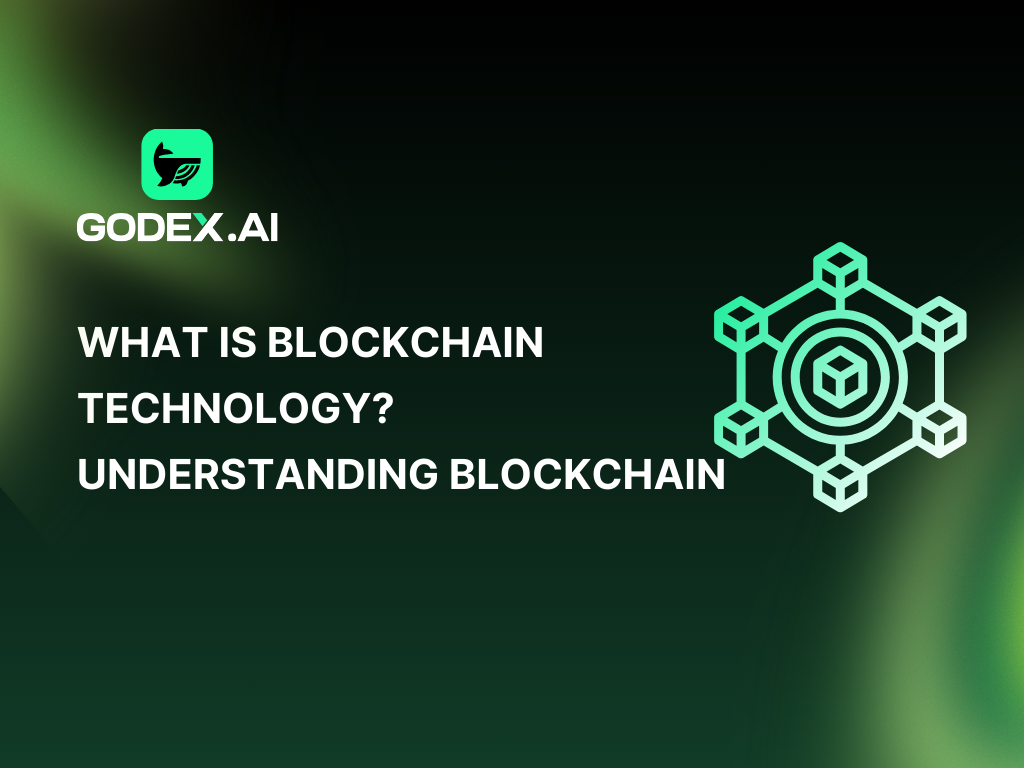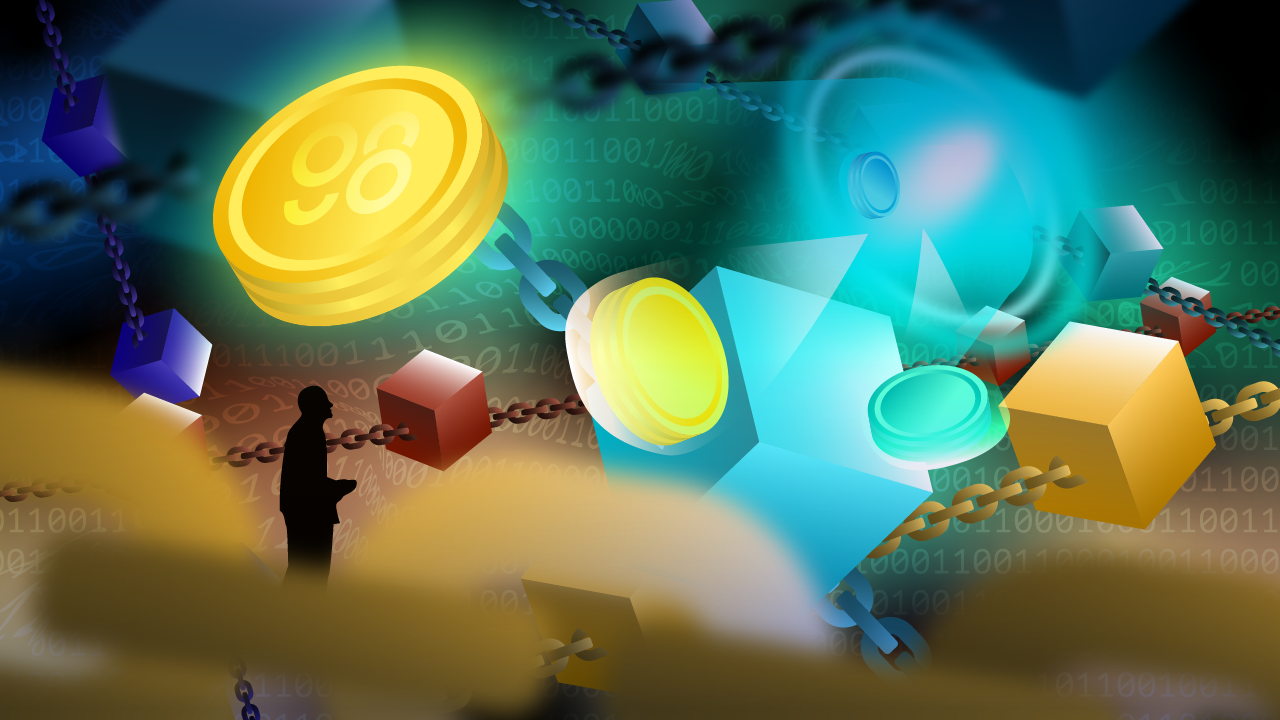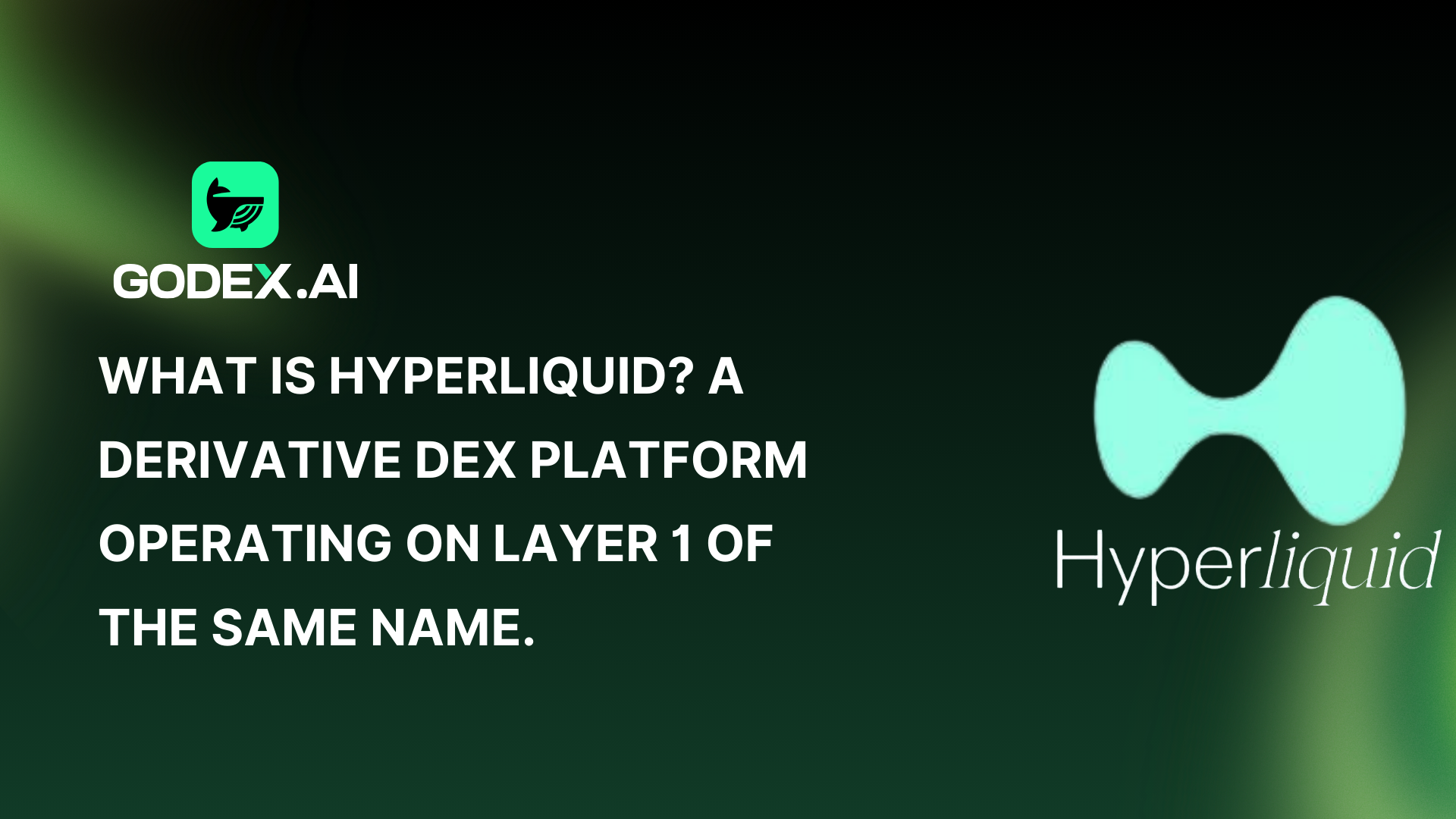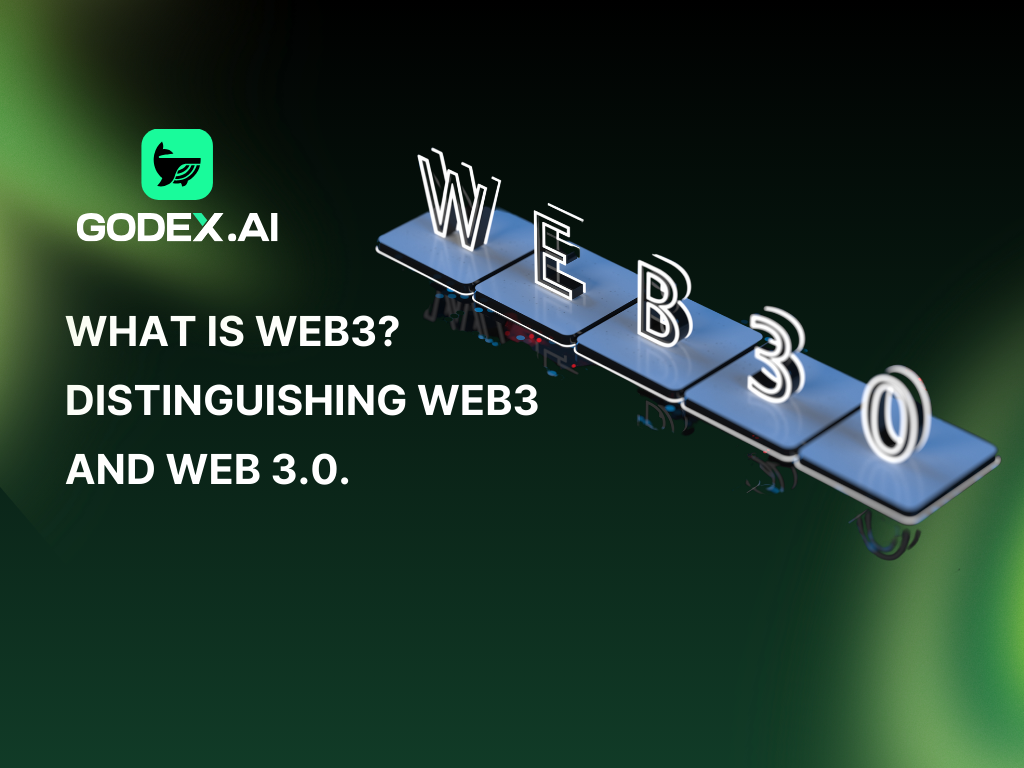The article helps readers understand Blockchain technology, how it operates, and its applications in today’s life.
What is Blockchain Technology?
Blockchain technology is a distributed database system that can record and store digital asset data on blocks in a transparent and immutable manner. These blocks will be linked together through hash cryptography and arranged in chronological order to form a chain.
Blockchain technology is also known as Distributed Ledger Technology (DLT) because it is not controlled by any agency or intermediary.

When was Blockchain born?
The idea of blockchain technology was introduced in the early 1990s by two scientific researchers Stuart Haber and W Scott Stornetta.
However, in late 2008, after Satoshi Nakamoto released a white paper introducing a new P2P electronic cash system called Bitcoin, the operating model of blockchain technology was established and described more clearly.
On January 3, 2009, the Bitcoin blockchain was born when the first block was mined by Satoshi Nakamoto, with a block reward of 50 Bitcoins. The world’s first Bitcoin transaction was made on January 12, 2009, when Satoshi sent 10 BTC to Hal Finney (a software developer in the United States).

Satoshi Nakamoto released a white paper introducing the Bitcoin peer-to-peer electronic cash system. Source: metzdowd.com
Accordingly, blockchain technology was born to solve the limitations in ancient transactions, while eliminating the problem of double spending and third parties such as banking systems, payment services, etc.
* Double spending is a phenomenon when a user uses a currency unit to pay for two different transactions at the same time. Normally, the solution to double spending is the existence of a third party intermediary to authenticate transaction information. However, blockchain technology helps solve this problem without the involvement of an intermediary.
Structure of blockchain
Blockchain consists of “blocks” to form a “chain”. Specifically:
-
Block contains transaction data on the blockchain.
- These blocks expand over time in number and are linked together to form a chain.
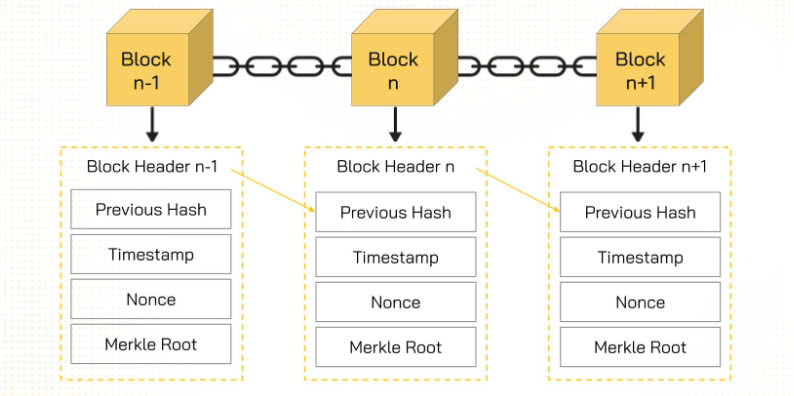
The structure of a blockchain consists of blocks linked together to form a chain. Each block will contain components including:
Block Header: Is a hash* containing information to identify a specific block in the blockchain, including the hash of the previous block, block creation time (timestamp), nonce, and merkle root.
Previous Hash: The hash code (or block header) of the previous block.
Timestamp: Block creation time.
Nonce: Each block in a blockchain will have a unique nonce number . This nonce number is calculated during the block mining process and helps create a unique hash value for the block.
Merkle Root: The final hash value of the pairing and hashing of transactions in the Merkle Tree. To understand the process of generating Merkle Root from Merkle Tree, read more in the article: What is Merkle Tree ?
*Hash is a string of characters encoded using cryptographic hash function technology from pre-determined input information.
How does Blockchain technology work?
The process of processing transactions on the blockchain will be as follows:
Step 1: The user requests to make a transaction. At this time, the transaction information will be recorded on the system, created into a record and sent to the nodes for verification.
Step 2: Computers in the system (called nodes) will validate records containing transaction information according to the consensus algorithm on the blockchain.
For example, let’s say a user needs to make a transaction of 3 bitcoins:
The nodes will verify if there are 3 Bitcoins in that person’s wallet, if so the transaction will be executed.
If the user’s wallet only has 1 Bitcoin, the node determines that the user’s wallet does not have enough bitcoin to make the transaction, the transaction will not be executed.
Step 3: The authenticated user records will be stored on a block.
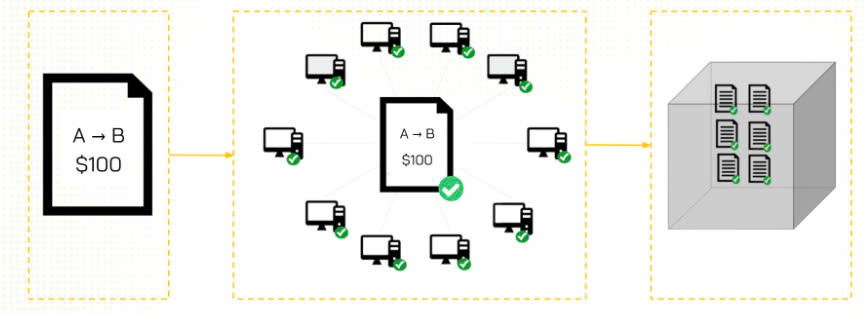
Step 4: The newly created block will be added to the chain by connecting the Previous Hash of the block to be added with the hash of the previous block and forming a blockchain.
The first block has no previous block so it will have a Hash code of a string of 0s, called the primordial block or Genesis Block .
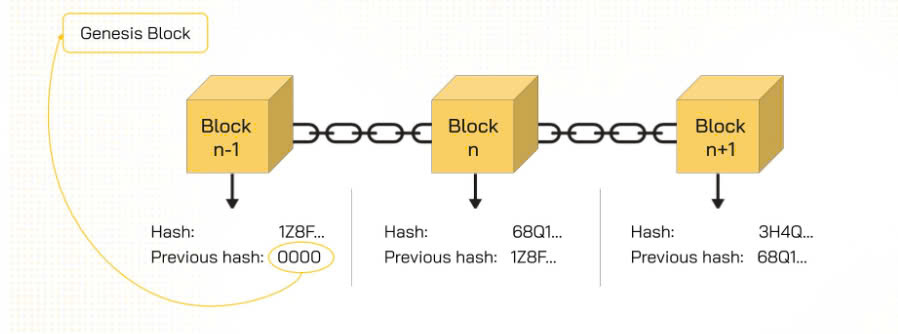
6 properties and characteristics of blockchain technology
Since blockchain was created to solve the limitations in the conventional transaction system, it will have the following properties:
Decentralization: Blockchain is completely not controlled by any agency or organization, but it operates independently based on algorithms and validating nodes to ensure decentralization.
Decentralization: The blockchain network is maintained by nodes in the system across the globe. This helps to distribute computing power across many different computers to ensure better results.
Immutability: Once data is written into a blockchain block, it cannot be changed or modified due to the nature of the consensus algorithm and hash code (detailed below).
Security: Blockchain secures information through cryptography, which encrypts stored data into hashes. Every block in the blockchain has its own hash and the hash of the previous block. Therefore, changing or trying to tamper with data would mean changing all the hash IDs . And that is impossible.

Transparency : Transaction information on the blockchain is public, allowing anyone to quickly check and retrieve transaction history.
Trustless: Blockchain networks operate through nodes that automatically validate transactions based on algorithms that include complex rules and cryptography. Nodes do not need to trust each other, but only need to follow the blockchain’s algorithm to operate and maintain the network.
Blockchain Consensus Algorithms
Blockchain consensus algorithm – the rules or mechanism that nodes follow to ensure that transactions made on the blockchain are accurate and identical across all nodes of the network.
If a block has data that has been tampered with, it will be compared to the data in another block to ensure that it is correct and consistent with the previous block. If there is a difference, it will not allow that data to be written into the blockchain. That is how the blockchain is designed to resist data changes.
For example, suppose a hacker attacks and changes the information on block n. At that time:
The hash of block n is changed.

The system will compare the hash of block n with the hash of the previous block to detect discrepancies.
The hacker must change the hash of the previous block n. The system detects a discrepancy in block n-1. The hacker must continue to change the hash of block n-2.
Thus, to change the transaction, the hacker must change all blocks to ensure compliance with the blockchain consensus mechanism.
Consensus algorithms help ensure the correctness and transparency of the blockchain.
Consensus algorithms are an integral part of a blockchain, playing a core role in keeping blockchains decentralized and secure. Some popular consensus algorithms include:
-
Proof of Work (PoW): Miners use their computing power to solve problems that generate hashes. Once solved, they gain the right to validate transactions and create new blocks in the blockchain. Examples: Bitcoin, Ethereum, Litecoin, Monero…
-
Proof of Stake (PoS): Users must stake a large amount of coins/tokens to gain the right to become a node that validates transactions and creates blocks. For example: Ethereum 2.0, Polkadot, Algorand…
-
Delegated Proof of Stake (DPoS): Token holders can vote and delegate authority to nodes to verify transactions. For example: EOS, Tron, BitShares…
-
Proof of Authority (PoA): An algorithm that values the identity & reputation of participants rather than the value of the tokens they hold. Examples: MakerDAO, VeChain…
The evolution of blockchain technology
To date, blockchain technology has evolved through stages with the emergence of various applications, including: Currency, Smart Contracts, Decentralized Applications, and Industry.
Blockchain Technology 1.0 – Currency
This is the first version of blockchain technology. Thanks to the application of decentralized distributed ledger technology, transactions taking place on the blockchain are processed quickly and transparently.
A typical example of Blockchain version 1.0 is Bitcoin, the world’s first cryptocurrency and the foundation for the development of the crypto market.
Blockchain Technology 2.0 – Smart Contracts
This is the second version of blockchain technology. With smart contracts , transactions on Blockchain will greatly reduce authentication costs, prevent fraud, operations, and increase transparency.
This version completely eliminates the emotional or ethical factors often encountered when working with people, a typical example is Ethereum.
Blockchain 3.0 Technology – Decentralized Applications
Decentralized applications (dApps) are independently deployed software, not located on a single server but stored in a distributed manner on decentralized repositories and can be written in any language.
Most dApp source code runs on peer-to-peer networks, which is the opposite of traditional applications and runs on a single centralized system.
Blockchain Technology 4.0 – Industry
Blockchain 4.0 technology is the latest version of Blockchain today. This version will apply all applications from version 1 to 3 to the actual production and business process.
So how to become a future blockchain developer, you can refer to: 4 Steps to become a Blockchain Developer
Applications of blockchain technology
Some typical applications of blockchain technology are:
Cryptocurrency: The first and most popular application of blockchain technology. Cryptocurrency transactions are conducted on the blockchain to ensure transparency, security and speed.
Smart Contract: Created based on blockchain technology to ensure automatic execution of terms and rules recorded in the smart contract when the previous conditions are satisfied. No one can prevent or cancel smart contracts.
Supply chain management system: Blockchain helps increase transparency and easily trace the origin of products.
Digital Identity: Blockchain technology helps create a secure and unforgeable authentication system, while ensuring the security of users’ personal information.
Real Estate: Blockchain helps simplify the real estate buying and selling process, reducing transaction fees and time.
Copyright: Using blockchain to protect intellectual property, ensuring that information recorded on the blockchain cannot be changed.
Banking and financial transactions: Blockchain helps reduce fees, time and increase efficiency in financial transactions.

